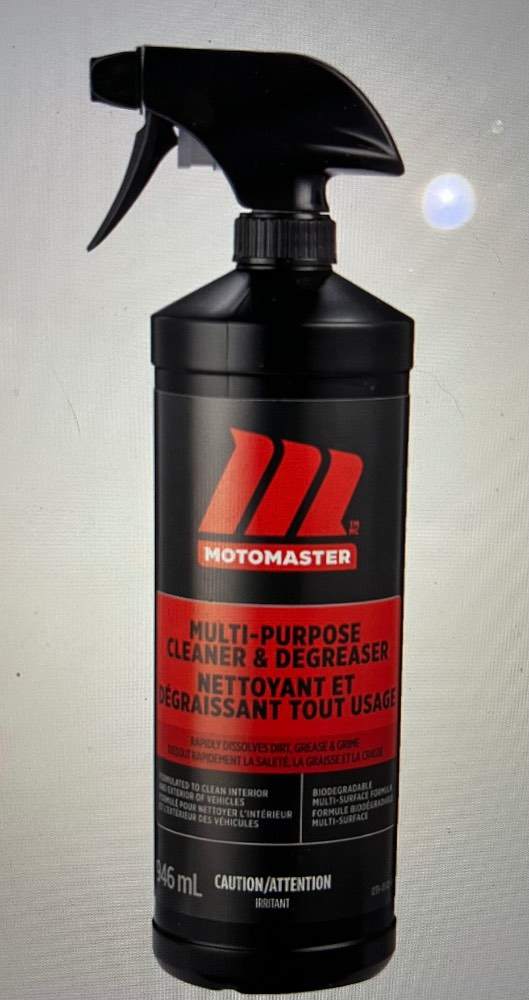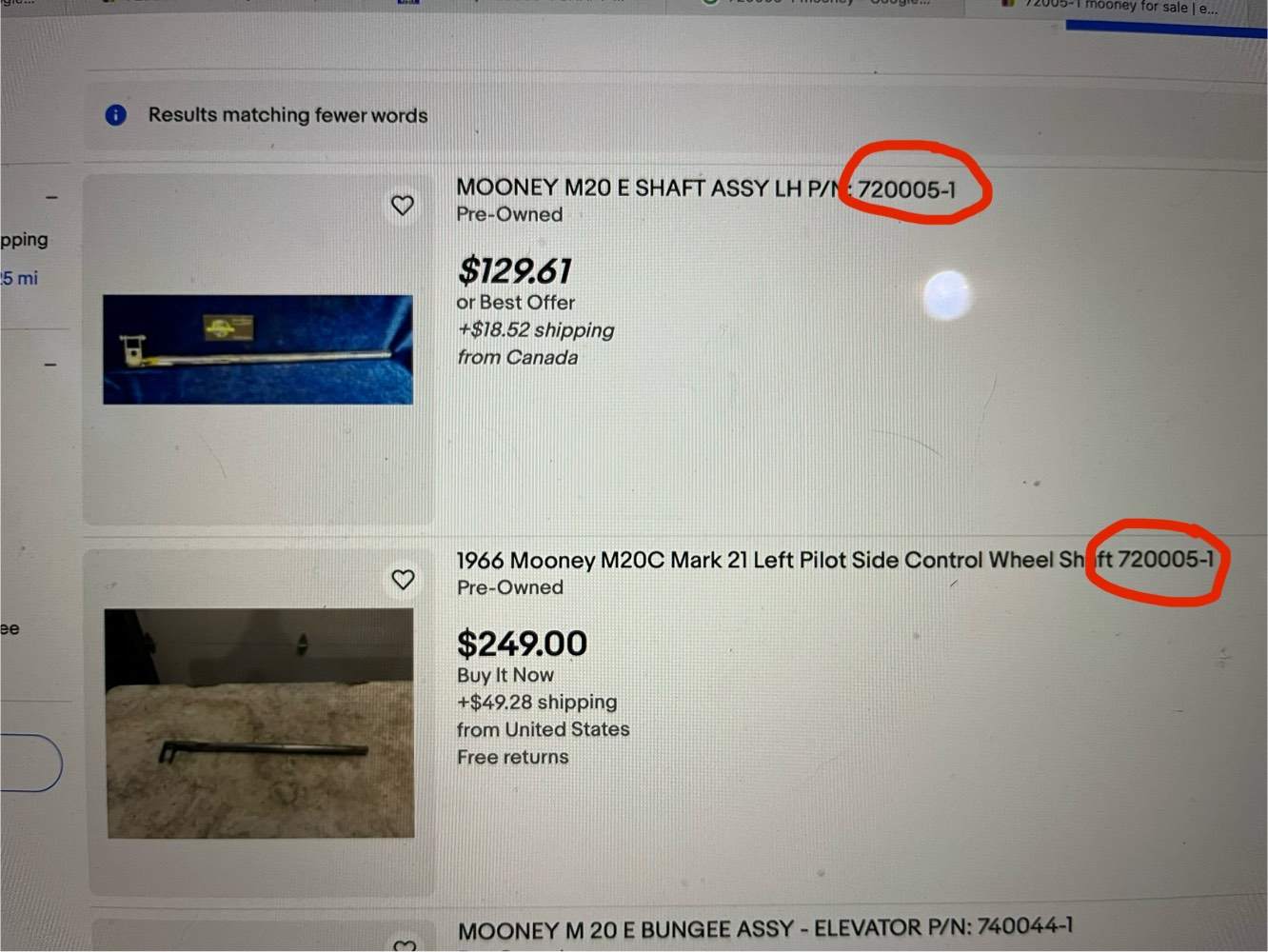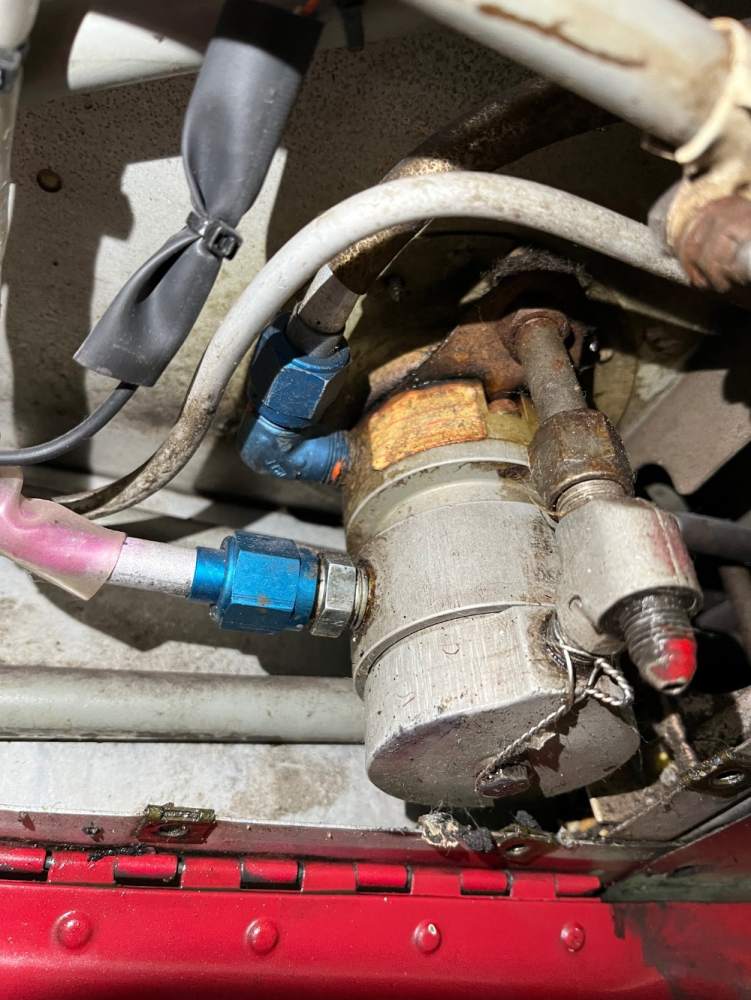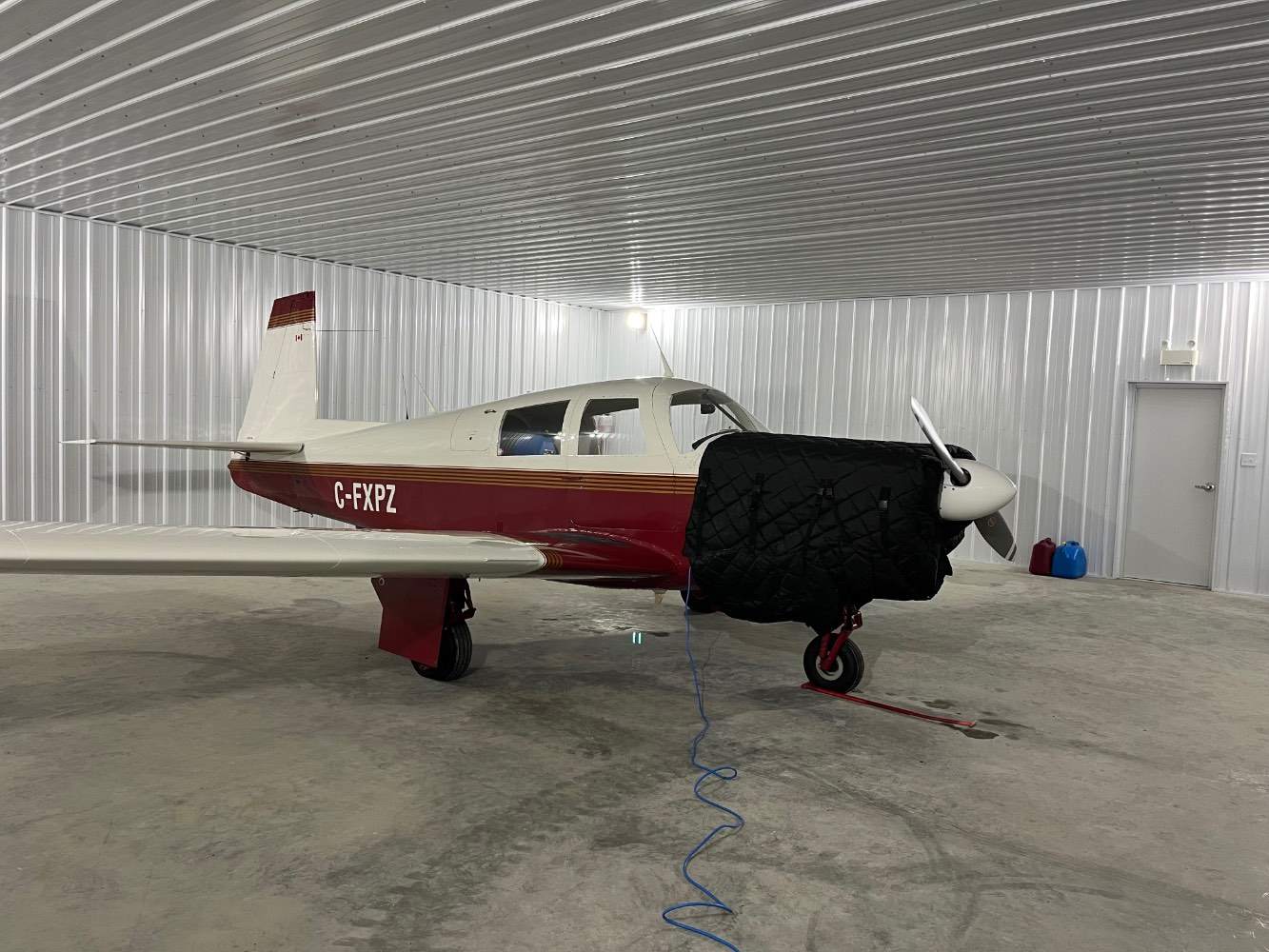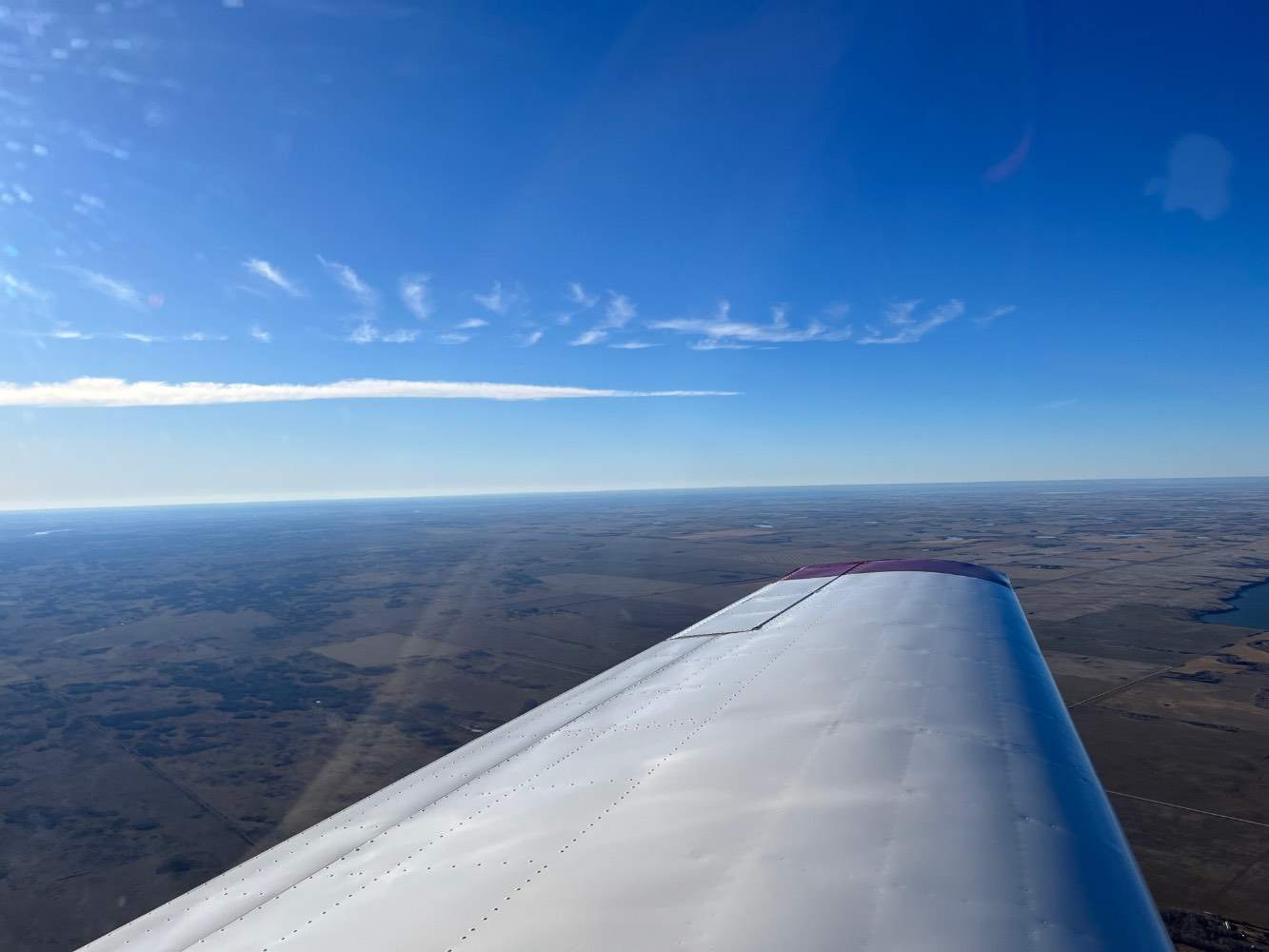-
Posts
67 -
Joined
-
Last visited
Content Type
Profiles
Forums
Blogs
Gallery
Downloads
Media Demo
Events
Everything posted by ArrowBerry
-
I've used a couple different automotive degreasers for under the wings, around the gear, belly etc. If you experiment with a couple different brands you'll notice that pretty much all of them are good at removing the oil and grease, but only some of them really cut into the exhaust staining. I did some trial and error to find one I liked. One thing I always do after applying a degreaser is to follow up with quick wax so that there's no degreaser residue left on the paint. Mostly out of an abundance of caution, I've never had an issue doing it this way. Plus it makes cleaning the next time easier. This is a brand that I've come to use often, it's about $12 for 950ml. Probably different brands are available depending on where you live. Apparently automotive Simple Green is corrosive to aluminum so that's the only one that I'm aware of to stay away from. They do make an aircraft version that's okay to use but you probably won't find that at a general hardware store. I've never had to use a degreaser on anything except the bottom of the plane. The top of wings, tail, fuselage etc I use automotive quick wax. Usually the Mothers or Meguiars brand. Honestly whatever is on sale when I'm there. Meguiars makes a really good liquid polish and wax that I use about once a year when I really do a deep clean. The quick wax is a great maintainer in between. Plus they usually smell really nice
-
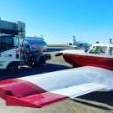
FUEL VALVE & STRAINER ASSY - GASKET P/N CONFUSION
ArrowBerry replied to DCarlton's topic in Vintage Mooneys (pre-J models)
I recently bought the HE fuel selector rebuild kit from Lasar. I sent Dan a couple pictures and he figured that was the right one. This is what ours looks like, and the old sticker was barely readable but HE could sorta be made out from what's left of it. Ours has been seeping undetected for a little while, the blue dye makes it look quite messy around the connections. We discovered the leak, however, by a small amount of fuel collecting inside the cockpit around the selector valve handle itself. I can't tell you if it's the correct one yet because we haven't installed it yet, but this is what is looks like and what Lasar recommended! -
We recently completed and passed the AD for the control wheel shafts. Out of curiosity I looked on eBay and some salvage sites to see what the theoretical cost and availability would be in having to replace one of them. I noticed that for the same advertised part number, some shafts have a small bearing or something it looks like in the centre and some don't? If I remember correctly ours did not, but what's the difference? Are the interchangeable? And why are they advertised with the same part number if they aren't the same? The part number in question is 72005-1, which is the LH control wheel. These are the two ads right on top of each other on eBay I was contemplating.
-

Opinions on a new panel layout
ArrowBerry replied to ArrowBerry's topic in Avionics/Panel Discussion
Okay so the argument is whether or not the G5 altitude readout is accurate. That's a very valid point. If you kept the layout the same, would you say it's better to put the TC on the right side and keep the airspeed and altimeter on the left? The only reason we had drawn it out the way we had was to have a back up "keep the wings level" sort of instrument. But you're right, in not ideal conditions the TC may not be as helpful as you'd want for that purpose. Its too bad the panel wasn't just a bit bigger to fit everything in! Secondly, the iPad. The company I fly for (King Air) uses the iPad as an electronic flight bag. That's essentially what we would like to use it as in our Mooney. We don't carry paper charts, maps, booklets, or company manuals etc for work either. Legally we're required to keep two charged iPads in the cockpit with all the up to date data, and we would employ the same rule for our private flying. My partner also flies corporate jets (Challenger and King Air) and his company has the same policy. The geo referenced charts for arrivals, departures, approaches, and taxiing are invaluable for situational awareness in my opinion. For shits we "taped" the iPad to the right side of the panel one day to see how it worked and it's just too far to be able to see the fine print of an approach plate. Not to mention how far it is away from your scan when in actual IMC. You're right to say that past the FAF and other critical phases of flight its not a primary focus, but in the event of a missed approach, it also gives you the geo referenced missed approach on the plate. The primary direction still comes from the GPS to your HSI and command bars, but I've always thought having that big picture map was really helpful to have close by. -

Oil/Filter Change Newbie Questions
ArrowBerry replied to SnowJustice's topic in Vintage Mooneys (pre-J models)
I've found it to be nearly impossible to remove the filter cleanly when the engine and oil is hot. We've tried a couple different things like the half PVC pipe, and those flexible rubber drain deflectors. They definitely make it better, but be darned I just can't seem to get it without a little bit of oil getting by that I have to clean up after. If you have time, my best advice is to drop the oil and let it drain overnight or at least a few hours. As long as it takes for the oil to cool and hopefully drain a little bit out of the filter and back into the engine... and then change the filter when it's cold. Doesn't seem to make nearly as much mess. Then the next day, or the next time I fly I'll change the filter, add oil, do my run up, inspect, and then go flying. -

Opinions on a new panel layout
ArrowBerry replied to ArrowBerry's topic in Avionics/Panel Discussion
The G5s are primary for attitude and the DG, we don't have those round gauges in the panel anymore or a vacuum system to run them. We aren't going to be removing any of the other four gauges from the original six pack, the turn coordinator, altimeter, airspeed, VSI are all staying--just a matter of deciding where to put them. Both G5s are AHRS capable, the HSI can be toggled to display attitude independently with its own battery. It also shows all of the same non-primary functions (alt, VSI, TC etc) so you have the non-primary backup of those as well. In the event of an electrical failure, in theory you would have the aircraft battery, and two G5 batteries to run through before you would loose the screen. I know these can fail, but each one is remarkably more reliable than a gyro and people used to fly these all the time IFR with just one gyro attitude. Obviously we're shooting for improvement and higher standards but it seems archaic to me to cling to these "primary" relics. A properly calibrated G5 runs off the same pitot static lines as the analog gauge, and the primary is still in the panel--albeit not right in front of you, but still available to verify. The iPad now contains a lot of information that seems more useful than staring at an analog altimeter while I already have two in front of me. ADSB traffic, real time weather, maps, charts, frequencies etc... basically an entire flight bag sitting right in front of you. I take the point of lacking an engine monitor. I agree. It's on the list. Also, regarding the autopilot location. I've flown a C182 with it mounted at the bottom right above the engine controls. My work plane with the G1000 has it mounted at the top centre and that feels more natural to me. It's more heads up, and easier to see the little lights beside which mode is active/armed. I'm sure its a matter of preference. -

Opinions on a new panel layout
ArrowBerry replied to ArrowBerry's topic in Avionics/Panel Discussion
What does the group think about this? Sometimes I think that it's silly to use valuable space on the left side to place "primary" instruments which are covered by the G5. When we fly in reality our scan is focused on the glass. I've seen a couple panels on here which have moved some of those redundant instruments to the right side. Recently we returned home from a 10 day trip flying to/from, and within Florida. Mostly VFR, but some IFR legs. The high density airspace really highlighted the need to have the iPad in a more convenient location than on your lap. I know yoke and window mounts are an option. However, why not right in front of you? You can mostly ignore the centre stack, that doesn't affect the left and right sides and its still undecided for us! -

Is a fuel selector valve rebuildable?
ArrowBerry replied to ArrowBerry's topic in Vintage Mooneys (pre-J models)
Okay I understand the output tube, going to the fuel pump. Which parts are the pointer and the ring? Without a cap plug, would another option be to drain the fuel into a clean pail from each tank as you remove the feed line for that side? -

Is a fuel selector valve rebuildable?
ArrowBerry replied to ArrowBerry's topic in Vintage Mooneys (pre-J models)
Thanks everyone for the pictures and posts of interest to read. I've been educating myself on this today, it's amazing how much we take for granted when systems work! Nevertheless, I never learn so much about something as I do when its broken lol Anyways, we took the panel off the bottom today. It looks like there is some seepage and blue dye at the top where it would go through the floor, likely how we noticed it. And also a small amount where the RH wing fuel line comes into the selector. There was a very old sticker on it which identified it as an A&E selector, but no readable part or serial number. I've reached out to LASAR about this seal kit, whether it's the correct one, and the costs associated with rebuilding it here with the kit or just sending it in and having them make it like new! https://lasar.com/seal-kits/complete-seal-kit-drawing-for-he769-fuel-selectorgascolator-he-fuel-selector-seal-kit-complete?rq=fuel selector seal -

Is a fuel selector valve rebuildable?
ArrowBerry replied to ArrowBerry's topic in Vintage Mooneys (pre-J models)
What did that run you for cost to send it in? Did you disassemble it yourself to send it in? What's the best way to access it? Do you gotta remove belly panels and crawl underneath? -

Tanis Cabin/ Avionics Pre-Heater?
ArrowBerry replied to William Munney's topic in Modern Mooney Discussion
Sorry that could have been clearer, I said "yes" it does make a difference in the cabin even if you don't feel it immediately when you sit down after having the door open. We run our buddy heater in the cabin for about an hour before we show up to the airport. Plus, even being in an unheated hangar nullifies the effect of wind and other reasons the heat might get blown away. The forced air heat directed towards the front seems to work good. -

Is a fuel selector valve rebuildable?
ArrowBerry replied to ArrowBerry's topic in Vintage Mooneys (pre-J models)
Thanks for your input. I've also got a picture to share. Its wet in the little cup where the selector sits. -

Tanis Cabin/ Avionics Pre-Heater?
ArrowBerry replied to William Munney's topic in Modern Mooney Discussion
Our solution. To the question regarding whether it makes a difference to preheat the cabin if you let out all that heat as soon you open the door--yes. I think so. It may release the warm air thats in the cabin but the avionics, cabin furnishings, etc all have residual heat that lasts longer than the amount of time it takes for you to do a walk around and get strapped in. When you turn on the avionics master the screens are all bright and ready, the throttle/prop/mixture controls are not stiff, and your plastic cabin furnishings are not so cold and brittle that they crack when you touch them. Although, we rarely fly when it gets really cold. Not worth the risk of breaking something, or surviving an engine out just to freeze to death. -
In Manitoba we have an unheated hangar, insulated engine blanket, and an EZ heat oil pan heater. Plug it in the night before and in the morning the engine feels warm when you stick your hand through the oil door to unplug it. The oil pan heaters are most effective IMO if you have them running for a longer period of time. In a couple hours your oil might be warm, but overnight the heat will spread upward and warm the top of the engine as well. You will have a more thoroughly heated engine. I don't think turning on the hangar heat for 1-2 hours is going to make much difference, it doesn't give enough time to warm the important components. I made a post last year with our engine and cabin preheating ideas.
-
Hey everyone, question regarding the options to repair/replace a leaking fuel selector valve. 1967 M20E. From my research today it sounds like the first step is differentiating whether it's coming from the sump with the ring which you pull to drain, or the actual left/right/off position handle. We think it's coming from the actual selector handle and not the sump, and I've been reading that these are not overhaul-able? Whereas the sump drain is? Can anyone confirm or give some guidance on this? Does LASAR have a kit with the O rings to replace on the selector itself? Possibly a fix is to have our mechanic take it apart, clean, and reassemble with new O rings? Are new ones available, and from where?
-

Opinions on a new panel layout
ArrowBerry replied to ArrowBerry's topic in Avionics/Panel Discussion
If I were adding both some scratch I'd agree with you about having the 275 instead. We bought the plane with one G5 already installed, and added the second when our vacuum pump failed two years ago. -

Opinions on a new panel layout
ArrowBerry replied to ArrowBerry's topic in Avionics/Panel Discussion
1) GNX375 2) That's really good to know, I see a lot of different panels which have the G5s either slightly left or right of centre and I've always wondered how noticeable it is. 3) The radios in the picture are not exact representations of what we have in the plane, best we could find in that builder. But definitely as actual units get finalized we'll be measuring that out. 4) I'd really love an SL30, I have the SL40 in a different plane that's VFR only and it's great. They are worth a lot on the used market though. Maybe something to consider once the "ouch" of the autopilot bill fades. Another big consideration for us is what we want to add in the future, without cutting a new panel again in 2-3 years. But it's really hard to decide how to cut a panel within a budget, while also thinking what you want to put in that spot later! I guess that's the real challenge for everyone. I really like the 275 EIS in the future because it will fit into existing space. The PAR200B audio panel from PS Engineering also looks great by combining two units and relieving space issues in the centre stack. Regarding the AP on top of the stack, I also fly King Airs as a day job that have been retrofitted with the G1000 and all of them have their AP on top. I guess it's what I'm used to. The older, steam gauge planes had their AP down in between the seats on a pedestal and you always have to look down to change a setting. -

Opinions on a new panel layout
ArrowBerry replied to ArrowBerry's topic in Avionics/Panel Discussion
We need two nav sources. Either GPS/VOR, GPS/ADF, GPS/GPS... any combination of the two. That's a Canadian thing, maybe the rules are different. Its not specifically related to the G5, it would be the same with the 275. If we removed the antique ADF we need to keep the VOR... or add a second GPS. One day I think I'd like to have something like a Garmin 225 nav/com, which can give a digital nav source to have green needles on the G5. Come to think of it though, it feels like there's practically no operational VORs in Canada anymore anyways so maybe that's just a waste of money. Just to do an ILS? I don't know if any airport nearby that has an ILS without also an LPV to nearly the same minimums. -

Opinions on a new panel layout
ArrowBerry replied to ArrowBerry's topic in Avionics/Panel Discussion
The transponder is in the GNX375, the GPS in the centre stack. Honestly the only reason we considered the ignition on the bottom is because it's on top right now, and the key chain always hangs in front of the VSI... not really a big deal I guess? If the positions were reversible, the key chain would hang lower down out of the way. Or just ditch that and have a single key works too! -
Can I get some input on this sketch layout of a new panel? What looks good? What doesn't? Are any items in places that they will likely not fit due to structure behind the panel? We're looking at taking out the current ADF and DME, and adding the GFC 500 while improving and organizing the layout. Some notes, the digital VOR on the sketch is actually just an old analog standalone VOR head/reciever which is currently in the old panel (the panel builder didn't have a closer looking picture). This cannot be changed right now because we need a nav source to be IFR legal without a digital nav/com radio talking to the G5. In the future, I'd like to change out this instrument to the Garmin 275 EIS as it would fit in the same hole and eliminate everything on the righthand side--once a new nav/com capable radio is in the budget! The two smaller instruments on the right side are a volt meter and EGT.
-
I tried something new this week. Always looking for "missions" for the plane... I love going out to fly from A-B with a purpose. I recently signed up with an organization called Canadian Wings of Rescue, sorta the Canuck version of Pilots n Paws. I gotta say, I absolutely loved it. Very impressed with the quality of communication, flexibility, and generosity of everyone who was involved. Using the plane to accomplish something real and useful for someone else was awesome. The folks who came out to the airport and seen the plane were so happy and excited to move these cats, and thought "wow what a beautiful airplane" I'm still smiling! I flew two hairless Sphynx cats from Saskatoon to their new home in Fort McMurray. Took me the entire day, based out of Winnipeg and fought a 50 knot headwind all the way west... although enjoyed grounding over 200 knots on the way home. Anyways, here are some pictures! 10.5 hours of airtime, I love our Mooney!
-

M20E Winter Operations
ArrowBerry replied to MooneyMunnerlyn's topic in Vintage Mooneys (pre-J models)
This topic I started last winter to show our preheating set up. We have an EZ Heat oil pan heater and a forced air buddy heater inside the cabin. Really slick to be able to control everything from your phone and just "show up" to go flying.


